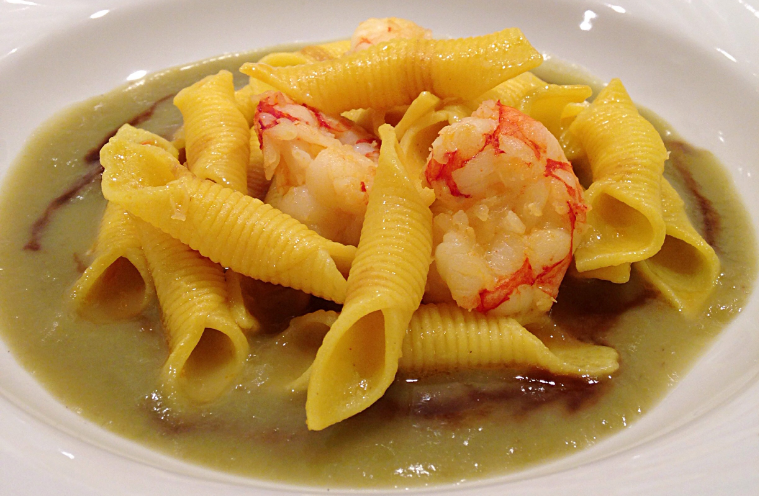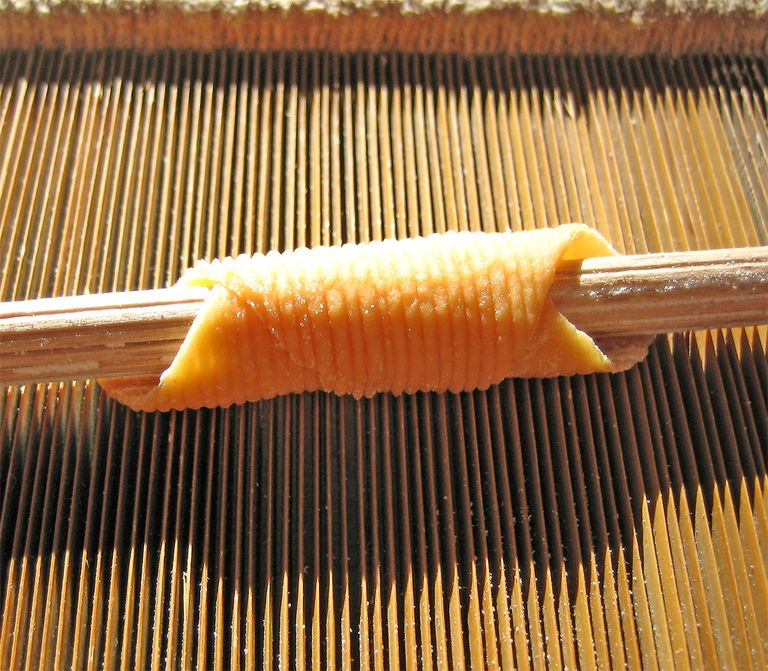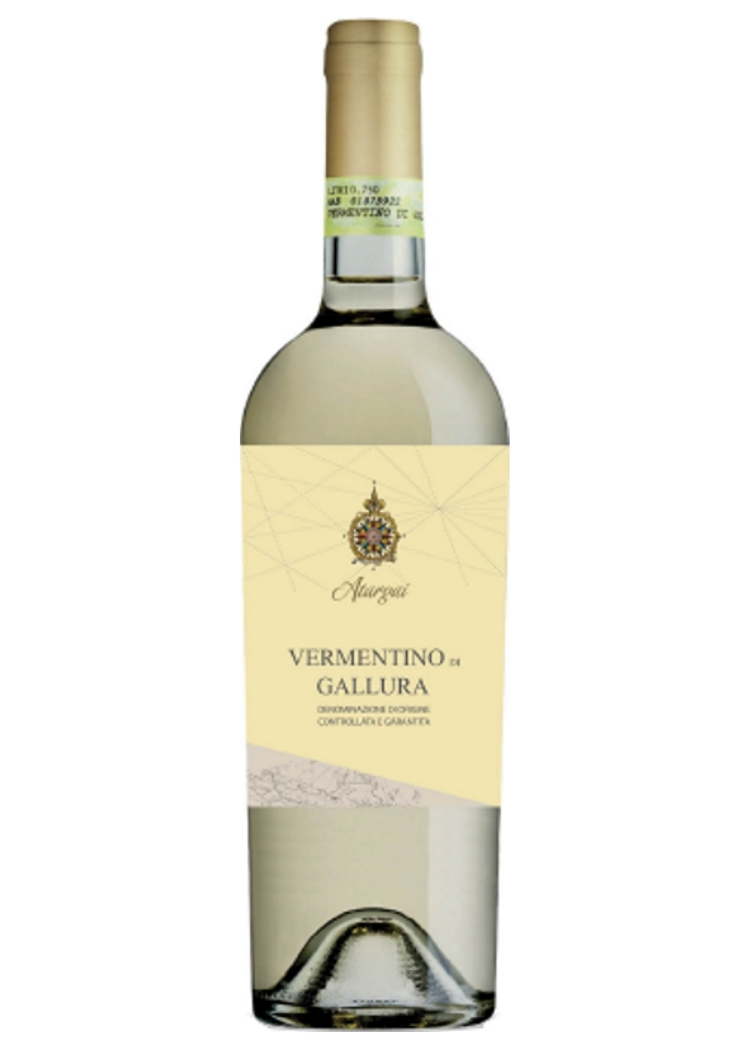
As you may have seen from the previous post, I have added a review, at the end of the recipe, of the wine that best suits this type of food.
It is a very common custom that I have learned from Italian reviews while I lived in that country.
Obviously these are Italian wine varieties but each user or chef can separate them to their own needs and tastes of the country in which they live.
I hope you like the novelty.
separador-recetas-cocina-blurt-ollasysartenes.png]( )
)
Como habrán podido observar a partir del post anterior he agregado una reseña, al final de la receta, del vino que mejor se adapta a este tipo de comida.
Es una costumbre muy común que me ha quedado de las reseñas italianas mientras vivía en aquél paìs.
Obviamente se trata de variedades de vino italianas pero que cada usuario o chef la puede apartar a sus propias necesidades y gustos del país en el que vive.
Espero que les guste la novedad.
Recipe for people no. 4
345 calories per person
 )
)Receta para personas n. 4
345 calorías por persona
Garganelli (in Romagna dialect: garganéi or macaró ruzlé or zuflót) are a type of egg pasta typical of Romagna, handmade, tubular in shape with a characteristic perpendicular groove.
The shape resembles penne as it has oblique ends, but where the two edges of pasta overlap, the garganello has a different consistency.
They are completely similar to the macaroni al comb produced in Emilia, which however are generally large, while the garganello romagnolo can also be small in size if it needs to be cooked in broth.
Even larger, but without the characteristic striping, are the Istrian spindles typical of Slovenian and Croatian Istria.
 )
)Los garganelli (en dialecto romañolo: garganéi o macaró ruzlé o zuflót) son un tipo de pasta al huevo típica de Romaña, hecha a mano, de forma tubular con un característico surco perpendicular.
La forma se parece al penne porque tiene extremos oblicuos, pero donde los dos bordes de la pasta se superponen, el garganello tiene una consistencia diferente.
Son completamente similares a los macarrones al peine producidos en Emilia, pero generalmente son grandes, mientras que el garganello romagnolo también puede ser pequeño si es necesario cocinarlo en caldo.
Aún más grandes, pero sin las rayas características, son los husos de Istria, típicos de la Istria eslovena y croata.


- 150 g durum wheat flour
- 100 g white flour "00"
- 2 eggs
- 2 tablespoons extra virgin olive oil
- 1 saffron saffron
For the dressing
- 300 g copper tomatoes
- 200 g fresh broad beans
- 2 tablespoons pecorino cheese
- 3 tablespoons extra virgin olive oil
- 2 cloves of garlic basil
- salt and pepper
 )
)
- 150 g de harina de trigo duro
- 100 g de harina blanca "00"
- 2 huevos
- 2 cucharadas de aceite de oliva virgen extra
- 1 sobre de azafrán
Para el aliño
- 300 g de tomates cobrizos
- 200 g de habas frescas
- 2 cucharadas de queso pecorino
- 3 cucharadas de aceite aceite de oliva virgen extra
- 2 dientes de ajo albahaca
- sal y pimienta

30' + 15' Cooking
- Mix the two flours, the eggs, the oil, a pinch of salt and the saffron dissolved in a little water until forming a soft and elastic dough.
- Form a ball and let it rest, wrapped in a sheet of plastic wrap, for 20 minutes.
- We blanch the tomatoes in boiling water for 30 seconds, remove the skin and seeds and cut them into cubes.
- Blanch the beans for 1 minute in the same boiling water, drain them and remove the skin that covers them.
- In a frying pan, heat the oil with the crushed garlic cloves, add the peeled beans and the diced tomatoes.
- We add salt and let it flavor for a few minutes.
- Turn off heat and set aside.
- Roll the dough until it forms a not too thin sheet, cut it into regular squares measuring 2 cm on each side and form the garganelli with the appropriate tool.
- Cook the pasta in boiling salted water, leaving it slightly al dente, drain it and pour it into the sauce.
- Sauté for a few minutes to mix the ingredients, add the chopped basil, the grated pecorino cheese and complete with a pinch of black pepper.
 )
)30' + 15' Cocción
- Mezclar las dos harinas, los huevos, el aceite, una pizca de sal y el azafrán disuelto en un poco de agua hasta formar una masa suave y elástica.
- Forma una bola y déjala reposar envuelta en una hoja de film transparente durante 20 minutos.
- Escaldamos los tomates en agua hirviendo durante 30 segundos, les quitamos la piel y las semillas y los cortamos en cubos.
- Escaldamos las habas durante 1 minuto en la misma agua hirviendo, las escurrimos y retiramos la piel que las recubre.
- En una sartén calentar el aceite con los dientes de ajo machacados, añadir las habas peladas y los tomates cortados en cubitos.
- Añadimos sal y dejamos aromatizar unos minutos.
- Apagar el fuego y reservar.
- Enrollar la masa hasta formar una lámina no demasiado fina, cortarla en cuadrados regulares de 2 cm de cada lado y formar los garganelli con la herramienta adecuada.
- Cocer la pasta en agua hirviendo con sal dejándola un poco al dente, escurrirla y verterla en la salsa.
- Saltear unos minutos para mezclar los ingredientes, añadir la albahaca picada, el queso pecorino rallado y completar con una pizca de pimienta negra.
Recommended wine.

Recommended wine: Vermentino di Gallura.
Vermentino di Gallura is a DOCG wine whose production is permitted in the provinces of Olbia-Tempio and Sassari.
Color: intense straw yellow with slight greenish reflections
Smell: intense, persistent, with vegetal notes typical of the Sardinian Mediterranean scrub.
Taste: persistent, smooth, quite tasty, complex in the mouth with a retro-olfactory sensation of fresh flowers.
It is appreciated as an aperitif if served cold. It combines well with the tasty first courses of Sardinian cuisine as it has good body and excellent structure. It is also served with roasted fish, mollusks and crustaceans.
The pairing with sweet pecorino cheese (preferably Sardinian) is certainly interesting.
Vermentino di Gallura is a DOCG white wine made in Sardinia, and more specifically in Gallura, an area that extends in the northeastern part of the region, between the provinces of Sassari and Nuoro, a former shepherd's land today dedicated to coastal tourism. on the Emerald Coast. On this island, arid and hostile to the most common agricultural crops and continually buffeted by the mistral winds, Vermentino manages to reveal his strong personality.
Vermentino di Gallura has Spanish origins, in fact it arrived in Sardinia only in the last decades of the 19th century, passing first from Corsica and then from Liguria.
Made 95-100% from the grape of the same name, and with a possible contribution of local grapes, Vermentino is a smooth and intense wine.
This particularly sweet and fruitful grape has a large, robust stem, with red-tinged branches and large leaves. The clusters are large, elongated in shape, sometimes almost cylindrical, sometimes pyramidal, with large, round grapes, thin-skinned and light in color with various shades of yellow depending on the level of ripening, which occurs at the end of September.
This excellent Sardinian wine obtained the Controlled and Certified Designation of Origin in 1996.
separador-recetas-cocina-blurt-ollasysartenes.png]( )
)
Vino recomendado.
- Vino recomendado: Vermentino di Gallura.
- Vermentino di Gallura es un vino DOCG cuya producción está permitida en las provincias de Olbia-Tempio y Sassari.
- color : amarillo pajizo intenso con ligeros reflejos verdosos
- Olor : intenso, persistente, con notas vegetales típicas del matorral mediterráneo sardo.
- Sabor : persistente, suave, bastante sabroso, complejo en boca con sensación retroolfativa de flores frescas.
- Se aprecia como aperitivo si se sirve frío. Combina bien con los sabrosos primeros platos de la cocina sarda ya que tiene buen cuerpo y excelente estructura. También se sirve con pescados, moluscos y crustáceos asados. El maridaje con queso pecorino dulce (preferiblemente sardo) es ciertamente interesante.
- Vermentino di Gallura es un vino blanco DOCG elaborado en Cerdeña, y más concretamente en Gallura, una zona que se extiende en la parte noreste de la región, entre las provincias de Sassari y Nuoro, antigua tierra de pastores hoy dedicada al turismo costero. en la costa Esmeralda. En esta isla, árida y hostil a los cultivos agrícolas más habituales y continuamente azotada por los vientos del mistral, Vermentino consigue revelar su fuerte personalidad.
- El Vermentino di Gallura tiene orígenes españoles, de hecho llegó a Cerdeña recién en las últimas décadas del siglo XIX, pasando primero desde Córcega y luego desde Liguria.
- Elaborado en un 95-100% a partir de la uva del mismo nombre, y con un posible aporte de uvas locales, Vermentino es un vino suave e intenso.
- Esta uva, particularmente dulce y fructífera, tiene un tallo grande y robusto, con ramas teñidas de rojo y hojas grandes. Los racimos son grandes, de forma alargada, a veces casi cilíndricos, a veces piramidales, con uvas redondas y grandes, de piel fina y de color claro con varios tonos de amarillo según el nivel de maduración, que se produce a finales de septiembre.
- Este excelente vino sardo obtuvo la Denominación de Origen Controlada y Certificada en 1996.
Fuentes de la/s imàgen/es / Sources image/s:
Y como siempre me despido de todos con un:
And as always I bid you all farewell with a:
